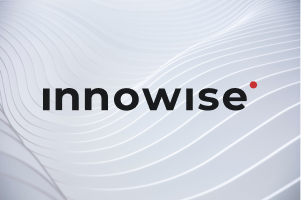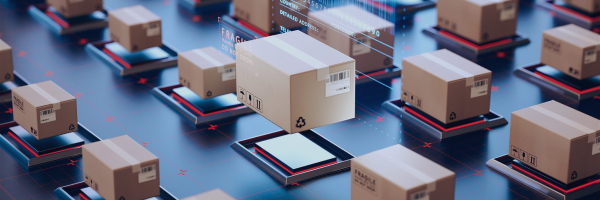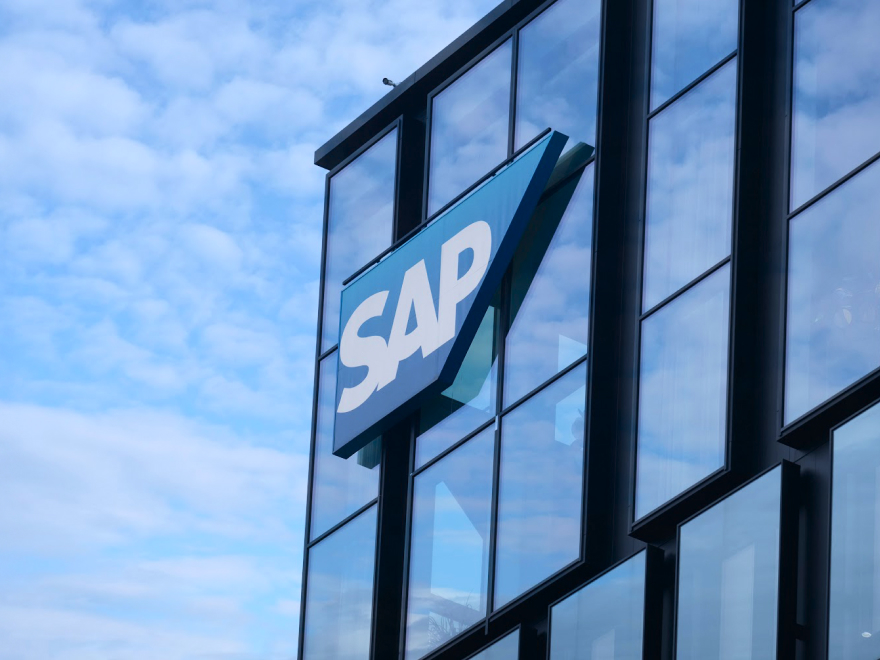Your message has been sent.
We’ll process your request and contact you back as soon as possible.
The form has been successfully submitted.
Please find further information in your mailbox.



Manufacturing is no easy feat — I’ve seen firsthand how rising demands for efficiency and agility can push businesses to their limits. And let’s be honest, clinging to outdated processes? That’s a recipe for frustration, inefficiency, and missed opportunities. I’ve worked with companies that struggled with bottlenecks, supply chain chaos, and production delays. Until they embraced ERP.
That’s where ERP software for manufacturing changes the game. It’s not just another tool; it’s the backbone of a modern, streamlined operation. My team and I have helped businesses integrate ERP to optimize production, cut costs, and boost productivity in ways they never imagined. In this article, I’ll walk you through how ERP can transform your manufacturing business and set you up for long-term success.
Ready to future-proof your operations? Let’s dive in.
The demand for ERP in manufacturing has skyrocketed, and I’ve seen firsthand how companies — big and small — are embracing these systems to stay competitive. According to Technology Evolution Centers, 50% of companies are acquiring, upgrading, or planning to update ERP systems soon.
The market itself is booming. Industry reports project that the global ERP market will grow from $71.62 billion in 2025 to $114.09 billion by 2030, with a 9.76% CAGR. Why? Because manufacturers are under constant pressure to optimize resources, improve coordination, and reduce costs while keeping up with market demands.
Manufacturing dominates the ERP space, accounting for 25.7% of the global market. Managing complex supply chains, ensuring seamless production, and maintaining operational efficiency are top priorities — areas where ERP has proven to be a game changer.
ERP for the manufacturing industry integrates critical business functions to help you optimize operations, boost efficiency, and save money. Here’s a rundown of key features that make a difference.














“ERP systems are more than just a tool — they’re a key part of staying competitive, especially if we talk about ERP for the manufacturing industry, where speed, precision, and efficiency matter most. At Innowise, we help businesses implement ERP solutions that streamline production, enhance supply chain visibility, and provide data-driven insights for smarter decision-making.”

Michael Labutin
Head of ERP Department
We offer end-to-end ERP system implementation, guiding businesses through the entire process from initial planning to full deployment. Our experts tailor solutions to meet the unique needs of your manufacturing operations to ensure smooth integration and optimal functionality from day one.
Innowise facilitates the seamless transfer of your critical business data from legacy systems to the new ERP platform. We prioritize data integrity and accuracy while minimizing downtime. At the same time, we ensure all information remains accessible and well-organized within the new system.
We provide continuous support to ensure your ERP system operates at peak performance. From troubleshooting to system updates and enhancements, our team is always available to resolve issues quickly and keep your operations running smoothly, adapting to changing business needs.
We provide tailored training sessions to equip your team with the skills to use your new ERP system effectively. We offer customized training sessions to help all users, from basic to advanced, understand the system and leverage its full potential for maximum productivity.
We help automate your business workflows to improve efficiency and reduce manual errors. Our ERP solutions streamline tasks like order processing, inventory management, and financial reporting, allowing your team to focus on more strategic aspects of the business while ensuring consistency and accuracy.
We develop business intelligence (BI) and reporting solutions tailored to your manufacturing operations. Our team helps create customizable dashboards, automated reports, and predictive analytics, enabling data-driven decisions that enhance efficiency, productivity, and profitability.
We develop cloud-based ERP solutions that offer flexibility, scalability, and remote access. With cloud ERP, your manufacturing operations can run smoothly without the need for expensive infrastructure. It provides real-time access to data from anywhere, anytime, and enables seamless collaboration across teams.
If your existing ERP system needs improvements or additional features, our enhancement services provide the perfect solution. We analyze your current setup, identify gaps, and implement upgrades that align with your evolving business needs, boosting the functionality and efficiency of your ERP system.
I’ve worked with a bunch of manufacturers rolling out Microsoft Dynamics 365, and here’s the deal — it's a powerful ERP solution, but not exactly plug-and-play. Where it really shines is when you need deep integration across departments and you're already using Microsoft tools like Office 365, Teams, and Power BI.
What makes it stand out is how tightly it connects manufacturing ops with sales, finance, and service. You can go from forecasting demand to adjusting supply chain plans in the same dashboard, with AI surfacing suggestions along the way. The production module, for example, lets you manage BOMs, routing, and resource scheduling with automation baked in, not as a separate extension.
One of my favorite parts? You can pull Power BI reports right into your ERP views. I’ve seen teams slash reporting time by over 60% just by swapping out clunky Excel exports for live dashboards.
Best suited for large and mid-sized manufacturers with complex operations that need full-process visibility, real-time data, and smooth collaboration across teams, especially those already relying on Microsoft tools.
If you’re after flexibility without draining your IT budget, Odoo is hard to beat. It’s a much lighter alternative to systems like Dynamics 365 or SAP S/4HANA, and thanks to its open-source nature, even the paid version stays pretty budget-friendly.
What really makes Odoo stand out is how modular it is. You can start small — inventory, MRP, sales — and add more modules as your business grows. No need to overpay for stuff you’re not using yet.
Of course, it’s not perfect out of the box. Advanced features like predictive maintenance or super-specific workflows usually mean bringing in third-party apps or a bit of custom dev work. But with the right tech partner, Odoo’s flexibility lets you shape it into exactly what your factory needs.
Ideal for small and mid-sized manufacturers that need a cost-effective and adaptable ERP solution with extensive customization capabilities
SAP S/4HANA isn’t just an ERP system; it’s a full-blown command center for manufacturers juggling multiple plants, international ops, and a thousand moving parts in the supply chain. It handles multi-country tax rules, multiple currencies, and intercompany logistics in one place. The in-memory engine keeps huge data sets moving fast, so you don’t get bogged down.
Let’s say you’re running factories in the US, Germany, and China. With S/4HANA, you can track materials from supplier to factory to customer in real time. If a shipment is delayed, the system flags it immediately and gives your team the info they need to act fast. You also get tools for predictive maintenance, so machines are serviced before they fail, not after.
Of course, all that firepower comes at a price, literally and operationally. Implementation takes time, customization usually requires certified SAP partners, and your team will need serious training.
Best suited for large manufacturing enterprises that require an all-encompassing ERP with extensive customization, automation, and enterprise-level support.
Enterprise resource planning solutions are a game changer for businesses looking to stay ahead in today’s fast-paced market. These systems do more than improve operations — they make them more efficient and connected. By integrating key processes, ERP brings real-time data, automation, and seamless coordination to every department.
The result? A more agile, efficient, and competitive business that’s ready to tackle whatever challenges come its way:













Manufacturing right now can feel like juggling a hundred things at once. Tight deadlines, supply chain surprises, rising costs, and nonstop pressure to go faster with zero mistakes. I’ve seen teams buried in spreadsheets, losing track of inventory, or constantly scrambling to fix production delays. Sound familiar?
That’s where an ERP steps in. It ties your whole operation together so everything flows smoother, faster, and with way less stress. Production planning gets easier, inventory updates automatically, orders move quicker, and reports practically build themselves. Most importantly, your team finally gets real-time data to make better calls without the guesswork.
Sure, it’s not a magic wand that fixes every single issue. But it gives you a fighting chance to stay in control when everything around you keeps changing. And these days, that’s already a pretty big win.
ERP systems offer several key benefits for manufacturers:
The process of integrating an enterprise resource planning system with existing systems typically involves:
The implementation timeline for an ERP system in the manufacturing industry varies based on several factors, including the complexity of the business processes, the size of the organization, and the chosen ERP solution. On average, an ERP implementation can take between 3 to 12 months. This includes time for planning, system configuration, testing, training, and data migration. Large, complex organizations may require more time for a smooth and effective implementation.
Dmitry leads the tech strategy behind custom solutions that actually work for clients — now and as they grow. He bridges big-picture vision with hands-on execution, making sure every build is smart, scalable, and aligned with the business.












Your message has been sent.
We’ll process your request and contact you back as soon as possible.

By signing up you agree to our Privacy Policy, including the use of cookies and transfer of your personal information.